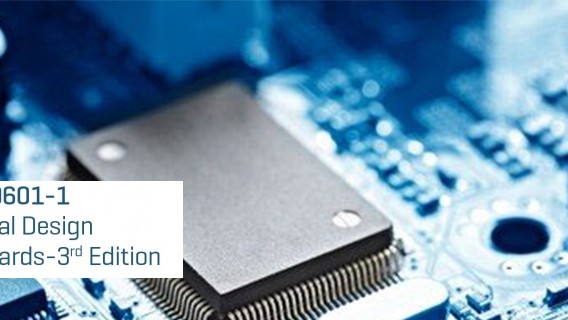The concept of using electronic devices that are designed with the concept of safety in mind is a primary concern for professionals who operate in the medical industry. In an attempt to increase the level of safety when an electronic medical device and even a medical-grade computer is used, a set of standards was created. The IEC 60601-1 standard is a set of documentation that was made to address the risks that are associated with the use of electronic medical equipment. It is in the manufacturer’s best interest to ensure that each device they design and release for purchase is compliant with this set of standards. Ensuring that an electronic medical device adheres to IEC 60601-1 can be an extremely complex task. There are a variety of concerns that need to be addressed before a device can be categorized as “safe” for use in medical working environments.
The IEC 60601-1 Base Standard: A Hazards-Specific Approach
Article Guide
Understanding the way the IEC 60601-1 standard works requires an observer to pay attention to the way the document is structured. Generally speaking, the base standard contained in IEC 60601-1 was designed to respond to hazards associated with the use of specific electronic medical devices. The base standard of IEC 60601-1 has a set of requirements that serves to evaluate the kind of hazard that is associated with the use of a certain electronic medical device. The base standard in IEC 60601-1 is very hazards-specific. This hazards-specific approach increases the level of protection that is afforded to patients and healthcare professionals who regularly work with electronic medical devices.
Exposure to Electrical Shock
The area of possible exposure to electrical shock is something that the base standard of IEC 6060-1 evaluates. The base standard aims to reduce the exposure of patients and healthcare professionals to voltages that exceed the 25 V AC range. The focus on the hazards inflicted by electrical shock also tackles procedures related to proper grounding, separation of circuits, and meeting dielectric tests.
Mechanical Hazards
Electronic medical devices are designed with a variety of moving parts. The use of these parts also poses possible hazards for patients and healthcare professionals who interact with electronic medical devices on a regular basis. The base standard of IEC 60601-1 seeks to address the possibility of incidents related to exposure to the moving parts of an electronic medical device. Areas covered include crushing, sudden breaking of a device, moving parts that may be suddenly expelled, etc.
Exposure to Radiation
Some electronic medical devices may harness some form of radiation. IEC 60601-1 attempts to regulate the exposure of patients and healthcare professionals to hazardous levels of radiation. Devices that adhere to IEC 60601-1 should be designed to reduce the exposure to radiation by limiting the x-radiation levels to 0.5 mrd in one hour intervals at a distance of 5 cm from surfaces that are outside of the treatment zone.
Flammable Anesthetics
IEC 6060-1 also has a section dealing with the hazards associated with flammable anesthetics. While the use of flammable anesthetics is less prevalent now, the base standard still addresses this concern. The intent of the standard is to reduce the risks associated with the interaction of flammable anesthetics with energy discharges, incidences of restricted ventilation, static discharge, etc.
Fire and other Biological Hazards
High temperatures associated with the use of specific electronic medical device are another area that may result in potentially hazardous incidents. Fire, liquid spills, and human error all contribute to possible biological hazards. IEC 60601-1 takes all these areas into account to ensure that each device is designed in safety from the ground up.
Excessive Energy Output Levels
The possibility of inaccurate operating data or an accidental shift in high output energy settings is another hazards-specific areas associated with electronic medical devices. The intent of the base standard is to reduce the exposure of patients and professionals caused by these potential inconsistencies. Manufacturers are required to adhere to design requirements that provide some form of protection for users of electronic medical devices in the event of an excessive energy discharge.
The Impact of the IEC 60601 Standard on the Healthcare Industry
August 6, 2015
IEC 60601-1 is the primary standard governing the design of medical devices. While not all countries have adopted IEC 60601-1 as the standard, globally it has become the de facto international benchmark for the design…
0 Comments5 Minutes
You Can't
Learn from a Pop-up
But we can deliver knowledge to your inbox!
We dive deep in the industry looking for new trends, technology, news, and updates. We're happy to share them with you.
Knowledge, News, and Industry Updates Right in Your Inbox



